Tahiti, French Polynesia: There are two lovely Tahiti gardens to explore: the Harrison Smith Botanical Garden, also known in French Polynesia as “Jardin Botanique de Papeari,” and the Vaipahi Water Gardens, “Jardins d’eau de Vaipahi.”
You can easily visit both in a day as they are 2 minutes apart by car on the island’s south side.
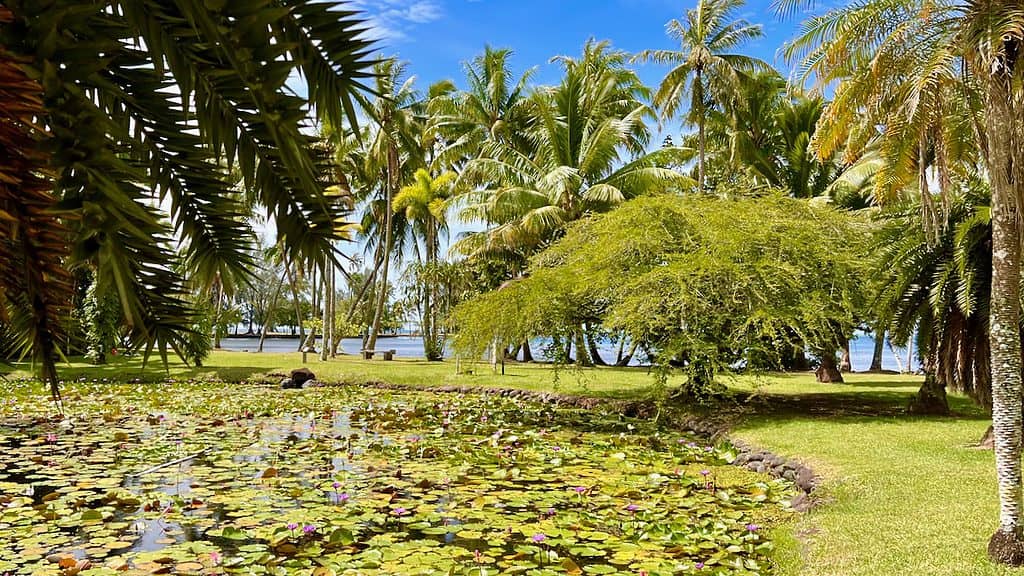
Harrison Smith Botanical Garden features a magical mape forest and the flowing rivers of water lilies enchanting those who visit.
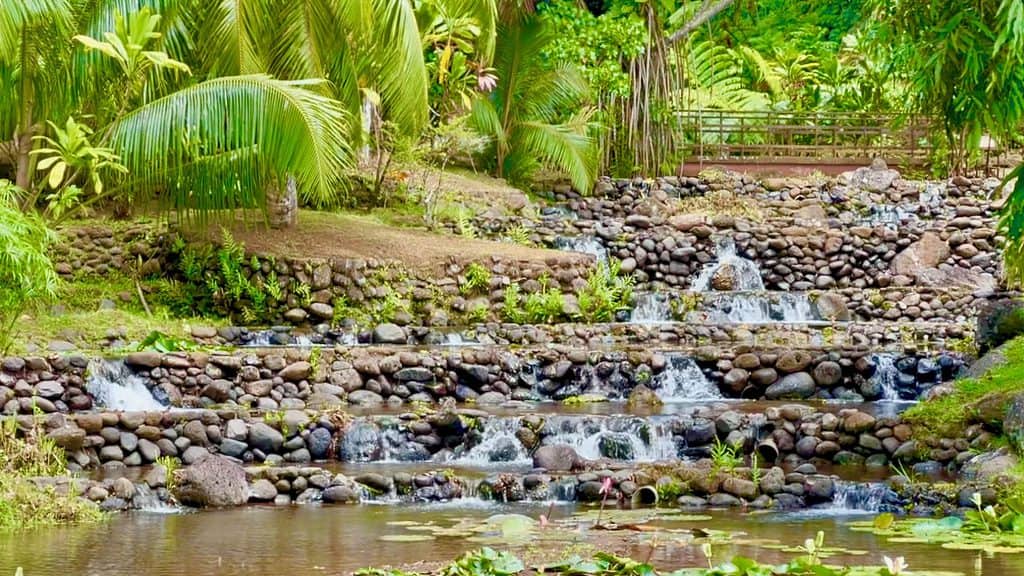
Vaipahi Water Gardens
The Water Gardens Vaipahi, also known as Jardins d’eau de Vaipahi, are a sacred place on the island of Tahiti. The centerpiece is the Vaipahu Falls, where according to legend, you will experience the “mighty breath of the spirit of the waters.”
For the complete garden tour of the Vaipahi Water Gardens, click on this featured post: The Beauty and Majesty of the Water Gardens Vaipahi Tahiti.
The Vaipahi Gardens are well maintained and draw more visitors than the Harrison Smith Botanical Garden, with majestic waterfalls and hiking trails.
Whether you are planning a trip to the Tahiti Botanical Gardens or are just interested in seeing them from afar, the Harrison Smith Botanical Garden (Jardin Botanique de Papeari) is located at the end of the post to assist with planning your trip. The Visitors Guide to the Water Gardens of Vaipahi is located at the end of the linked post, The Beauty and Majesty of the Water Gardens Vaipahi Tahiti.
Harrison Smith Botanical Garden
A Vision for a Tahiti Garden in Papeari

The unusual story of this garden goes back to the early 1900s and weaves together a story of an American Harvard graduate, Hollywood movie stars, acclaimed authors, a famous French Post-Impressionist artist, and heads of state. Their stories intersect on a small French Polynesian Island in the middle of the Pacific Ocean. It’s quite a fascinating story.
Harrison Smith’s Motu Ovini
This Tahiti Garden owes its existence to an American, Harrison Willard Smith: Professor of Physics at the famed Massachusetts Institute of Technology, World War 1 ambulance driver, and heir to a US property that produced enough oil to allow him to live a life of his choice.

Smith’s passion for tropical plants drove him to purchase land, which he named Motu Ovini (Wild Islet). Smith traveled to tropical regions in the Americas, Asia, and Africa, to gather plants for his Garden.
Smith planted 250 new varieties of flowers and exotic trees on the land. Most of the plants helped improve life for the people on the island.
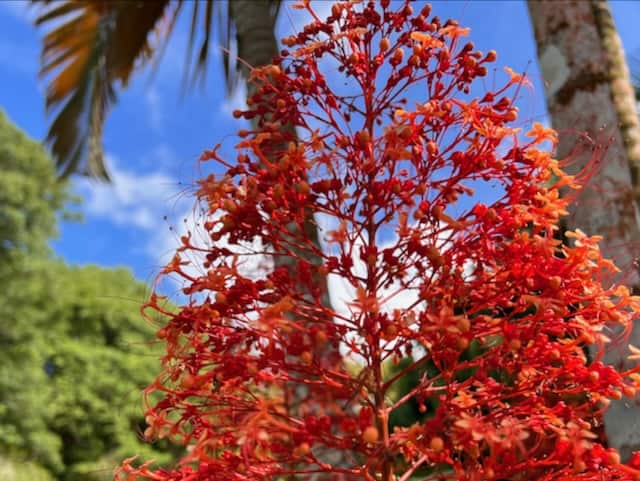
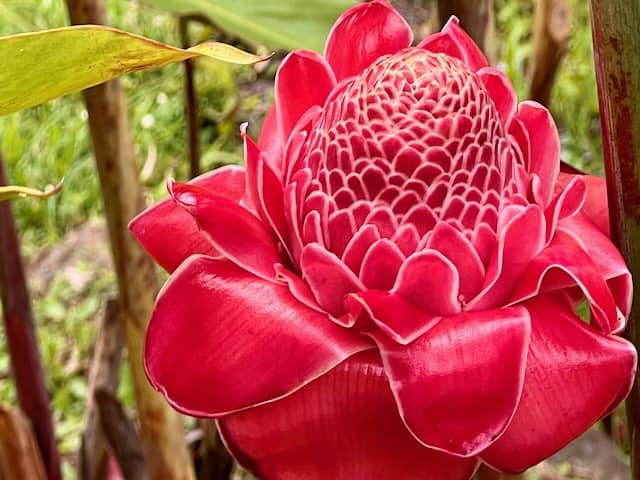
After Smith died in 1947, the Garden changed management several times, bringing us to the garden’s current state.
Harrison Smith Botanical Garden History
How did the creator of this garden, Harrison Smith of Boston high society, end up digging in the dirt in Tahiti until his death?
In 1903, Harrison Smith took a break from teaching at MIT and embarked on a round-the-world trip that included Tahiti. At age 37, he gave up his teaching career to move to Tahiti to live his dream.
Smith’s straightforward goal was to do good in the world while living a simple life.
Truly altruistic, he freely shared his love and knowledge of tropical plants, providing cuttings, seeds, and fruits to anyone who asked. He was affectionately known among the locals as the “Grandfather of the trees” for all the plantings on his land, which he called Motu Ovini (Wild Islet).
Over time, Motu Ovini became a meeting place for sharing plants and botanical knowledge.
Harrison Smith died in 1947 after a long illness. He was buried on the mountainside overlooking the garden. His tombstone read: Harrison Smith: A Good Man.
Smith planned to continue the garden by giving the land to Jean-Marie Boubee, the head of the Tahitian Agricultural Service. However, the size of the gardens and the maintenance were too much, and Boubee sold the land to Cornelius Crane, a wealthy American, to carry on Harrison’s legend.
Cornelius Crane was forced to make a deal with the government to obtain the land. He agreed to give the government of French Polynesia 18 hectares of the garden that lay along the sea in the event of his death as long as two conditions were met:
1. Preserve the land as a botanical garden
2. Give the public access to the property
In the event of non-compliance, the property will revert to the heirs of Crane.
So in 1962, the government of French Polynesia gained control of the 18 hectares by the sea. The gardens would go through the management of several governmental agencies, most recently landing under the purview of the French Polynesian Board of Tourism in 2017.
The Gauguin site was a successful museum for years, attracting the likes of Alfred Hitchcock and Brigitte Bardot, along with General De Gaulle of France and the President of Italy. The museum fell into disrepair in 2013.
A Botanical Garden in the Rough

The Garden is a diamond in the rough. The entrance isn’t very welcoming.
In fact, you’ll wonder if you made a good decision to visit when you pull into the empty parking lot.
Chickens and roosters peck about. A chain link gate is pulled back a few feet to let the visitor pass. But once you step through the gates and move further into the garden, you’ll see Harrison Smith’s vision.
Floating Tahiti Flowers

A rainbow of colors floats in the lake with the sea as the backdrop. Water lilies fill the lakes and rivers flower, reminiscent of a Monet Painting.
The water channels that feed into the lake are also filled with water lilies curving through the garden from one side to the other.
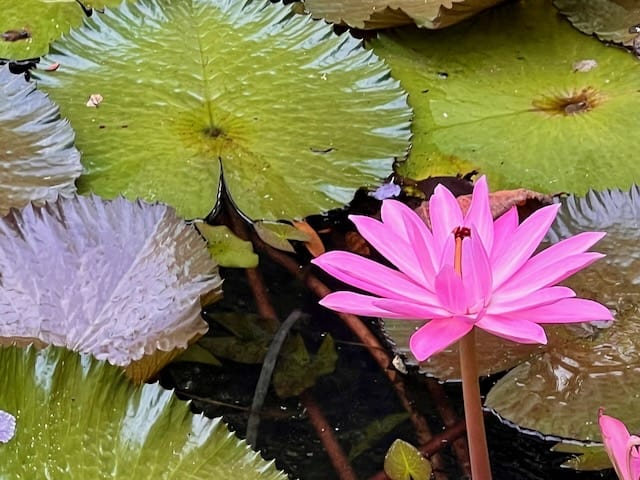
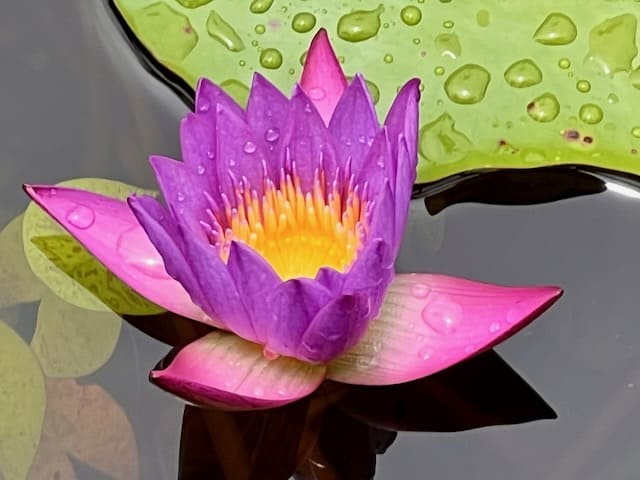
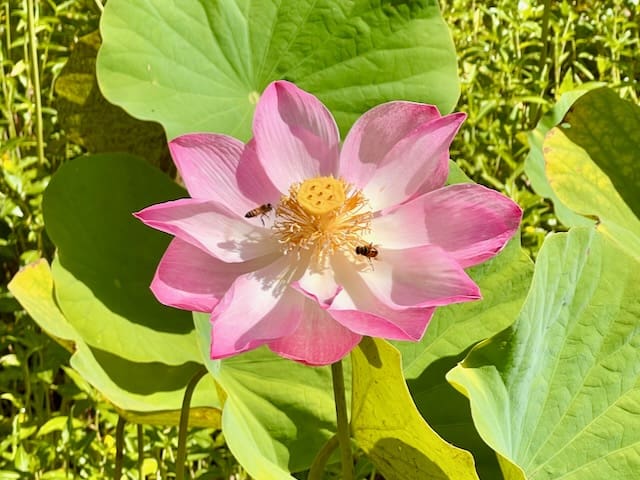
Moody Mapé Forest
About halfway through the garden, you’ll enter the wetland mapé forest. The forest is a surreal, quiet, and moody.
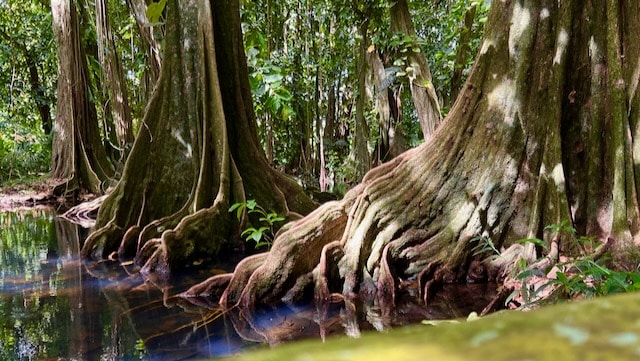
Moody Mape Forest, Harrison Smith Botanical Garden
The magnificent tree trunks contort and disappear under the water line. Sunlight filters through the branches creating milky indigo reflections in the water.
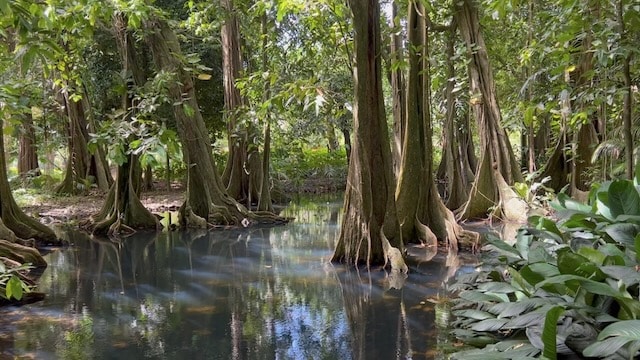
Peaceful Mape Forest, Harrison Smith Botanical Garden
It is quiet in the forest, only disturbed by the occasional passing car or the plop of a mapé tree fruit falling into the water.
The mapé tree is also known as the Polynesian Chestnut. The fruit of the mapé has a chestnut flavor and is very nutritious and often sold along the roadside.
The Galapagos Turtle
Immediately off to the left of the entrance to the Garden is the enclosure for a beloved Galapagos turtle.
The gate to the enclosure was locked, but visitors could walk around the side and meet the octogenarian, Te Ara U’i.

There were originally two Galapagos turtles in the botanical garden, a male and a female. Both were captured in a 1929 zoological expedition led by the Governor of Pennsylvania to collect specimens for the United States National Museum of Natural History.
On arrival in Tahiti, the Governor offered two turtles to his American friend, the writer Charles Nordhoff, who you may recognize as the co-author of Mutiny on the Bounty. Nordhoff lived in Tahiti, where he wrote adventure books, many of which were turned into Hollywood films.
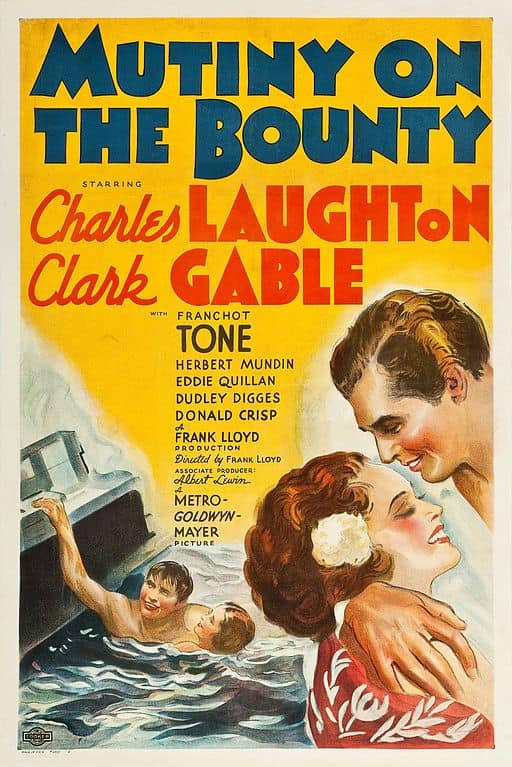
After Nordhoff and his family left Tahiti, the turtles were rehomed several times, eventually ending up at the Garden around 1965.
French Artist Paul Gauguin
In the corner of the Harrison Smith Botanical Garden is the former home of Paul Gauguin, the famous French painter and frenemy of the artist Van Gogh. Gauguin arrived in 1891 and did some of his most impressive works here.
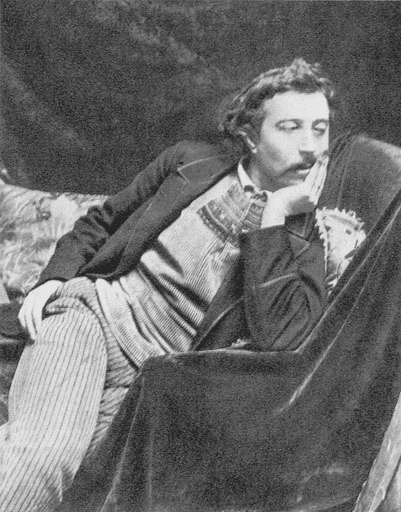

Renovation of the Harrison Smith Garden and Gauguin Compound
There is a renovation plan in the works for the Gauguin compound and the Harrison Smith Garden, with the 1st phase to be completed in 2024. However, it doesn’t look like things are on schedule.
The area inside the gates is quite large. The planned renovation will include exhibition space devoted to Gauguin’s life, beginning with his arrival in Tahiti in 1891 until his death in Atuona (Hiva Oa – Marquesas) in 1903.
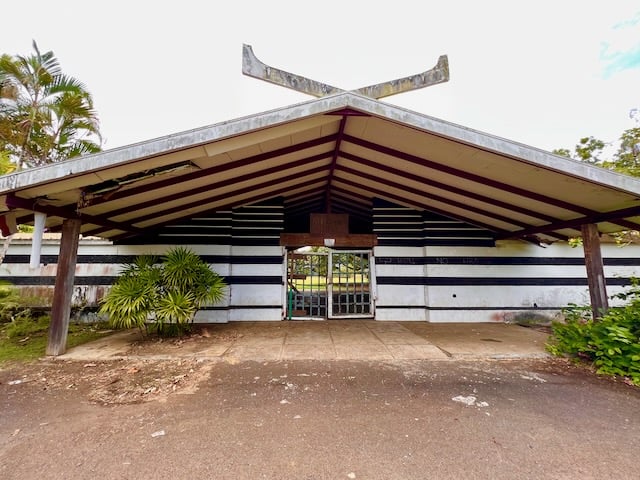
The second phase will focus on landscaping the botanical garden, the Motu Ovini, and the remodel of the former Gauguin Museum into a space called “Maison Harrison Smith” for activities related to botany.
The Most Enchanting Tahiti Garden
Upon exiting the Harrison Smith Botanical Garden, a motorcycle maneuvers through the narrow front gate and heads to the turtle enclosure. It looks like lunchtime for Te Ara U’i.
Of the two Tahiti gardens, the Harrison Smith Garden and the Vaipahi Water Gardens, the Smith Garden was my favorite. I loved the unique experience of the quiet, majestic Mapé Forest and the abundance of water lilies in this quiet, serene place. During my visit, I saw no other visitors besides a family picnicking by the sea.
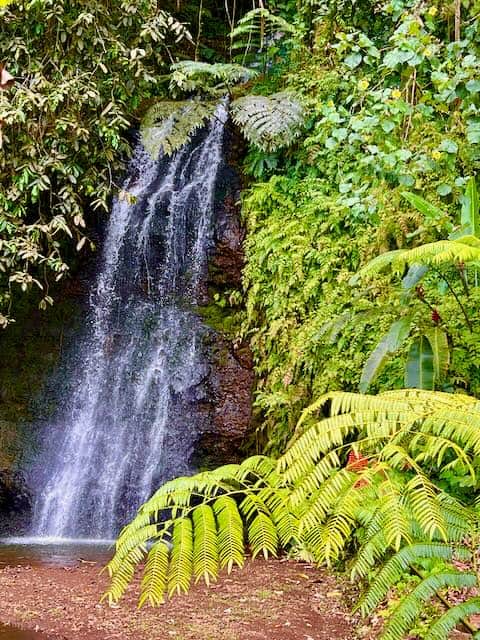

Conclusion
I spent about an hour enjoying the Harrison Smith Botanical Garden and then headed 5 miles down the road to visit the Vaipahi Water Gardens.
Do visit both gardens. They are two very different Tahiti Garden Experiences.

Visitors Guide to the Harrison Smith Botanical Garden Tahiti
Jardin Botanique De Tahiti
Address:
Address: Teva I Uta, Tahiti, French Polynesia. PK51 on the southwest coast, in Papeari.
How to Best Experience the Garden
Update May 2023: The garden is currently closed for renovations. It is expected to reopen in 2026.
You will need to rent a car to visit the Harrison Smith Botanical Garden. It is 32 miles along the west coast from Papeete and takes about 40 minutes to an hour: The road is not straight, and the locals drive leisurely.
Follow the path straight into the garden contra to the direction suggested on the garden signage. You’ll see the best the Garden offers while avoiding the disappointing first impression of the roped-off areas in the other direction.
Check the enclosure on the left near the entrance to see the Galapagos turtle. If it is locked, walk around the side.
Bring sunscreen, mosquito repellent, and an umbrella. The garden opens at 7:00 a.m., so come early in the day before the heat closes in.
Note: There are no facilities at the Harrison Smith Garden. The Vaipahi Water Gardens, just 2 miles away, has a gift shop with refreshments and restrooms.
Harrison Smith Botanical Garden Map
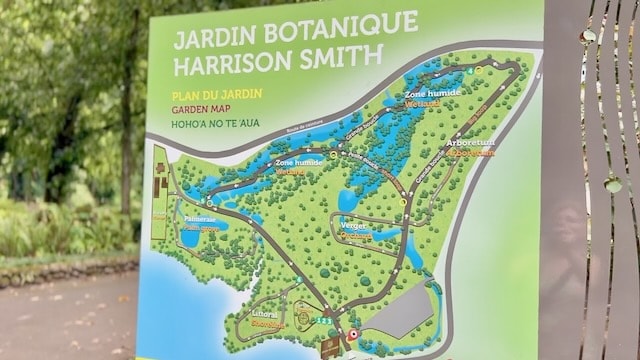
Harrison Smith Botanical Garden Hours
The garden is currently closed for renovation. It is expected to reopen in 2026.
Harrison Smith Garden Entrance Fee
The garden is FREE to enjoy.
Parking at the Harrison Smith Garden
There is a large, free parking lot right in front of the entrance.
Accessibility at the Harrison Smith Garden
The garden paths are flat, paved, and compacted gravel.
Accessibility at the Harrison Smith Garden
The garden paths are flat, paved, and compacted gravel.
Where to Eat Near the Tahiti Botanical Gardens
Restaurant Bar du Musee Gauguin
The Restaurant Bar du Musee Gauguin sits on the seaside, about halfway between the Vaipahi Water Gardens and the Harrison Smith Botanical Garden. Listed as a ‘culinary journey through Tahitian, French and Asian influences’ the restaurant uses locally sourced ingredients and serves them up in a Polynesian atmosphere.
PK 50.5, Seaside, Papeari, Tahiti, French Polynesia. 1.0 Mile (about a 3-minute drive) from the Harrison Smith Botanical Garden. Open 11:30 – 2:30, Tuesday – Friday, closed Sunday and Monday.
Ô Tumu Mape
Head over to the nearby Vaipahi Water Gardens and park. O Tumu Mape is a low-key outdoor kitchen and eating experience by the ocean. Look for a handwritten board along the road with the restaurant’s name. Serving French, American, and Polynesian food.
Teva I Uta Vaima spring, 98726 French Polynesia. Less than 2.2 miles (About 5 minutes by car from the Harrison Smith Garden. 3-minute walk from the Vaipahi Water Gardens). Closed Monday and Tuesday. Wednesday to Friday, 10:00 am – 3:00 pm; Saturday and Sunday, 9:00 am – 5:00 pm.
Where to Stay near the Tahiti Botanical Gardens
Vanira Lodge
Most visitors will be staying in the resort areas closer to Papeete. Still for those willing to venture out, the Vanira Lodge is a highly rated, eclectic stay on the peninsula of Tahiti (about a 1 hour and 15-minute drive from Papeete).
Located in Teahupo, a “village at the end of the world,” it’s famous for its surfing and sunsets, but not strong internet.
Vanira Lodge, Taiarapu-Ouest, French Polynesia. 15 miles (30-minute drive) from the Harrison Smith Gardens.
Hilton Hotel Tahiti
If you prefer to stay closer to the airport in a resort area with all the bells and whistles, the Hilton Hotel tops the visitor ratings. Located seaside, it is a bit pricey.
Hilton Hotel Tahiti, Fa’a’ā 98713, French Polynesia. 31 miles (about a 50-minute drive) from the Harrison Smith Botanical Garden.
Recent Posts
Museums for All in Botanical Gardens and Arboretums Blooming with Access
Museums for All is an initiative that allows individuals and families receiving food assistance (SNAP EBT - Supplemental Nutrition Assistance Program Electronic Benefit Transfer) to gain free or...
San Diego Botanic Garden, Encinitas, CA: The San Diego Botanic Garden in Encinitas is a 37-acre sanctuary about a 30-minute drive north of the city of San Diego. Just a mile from the Pacific...
